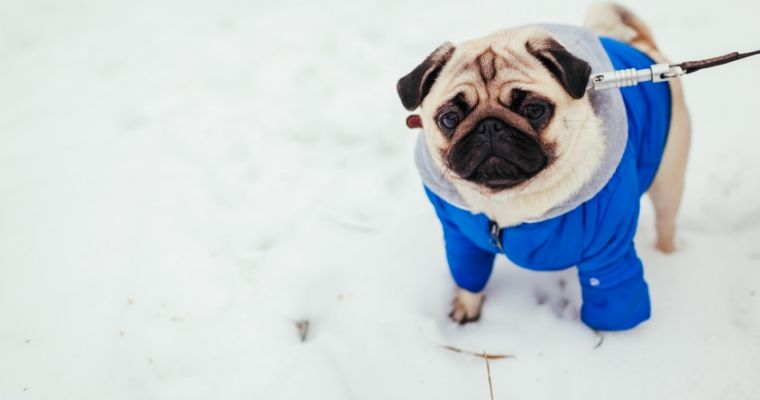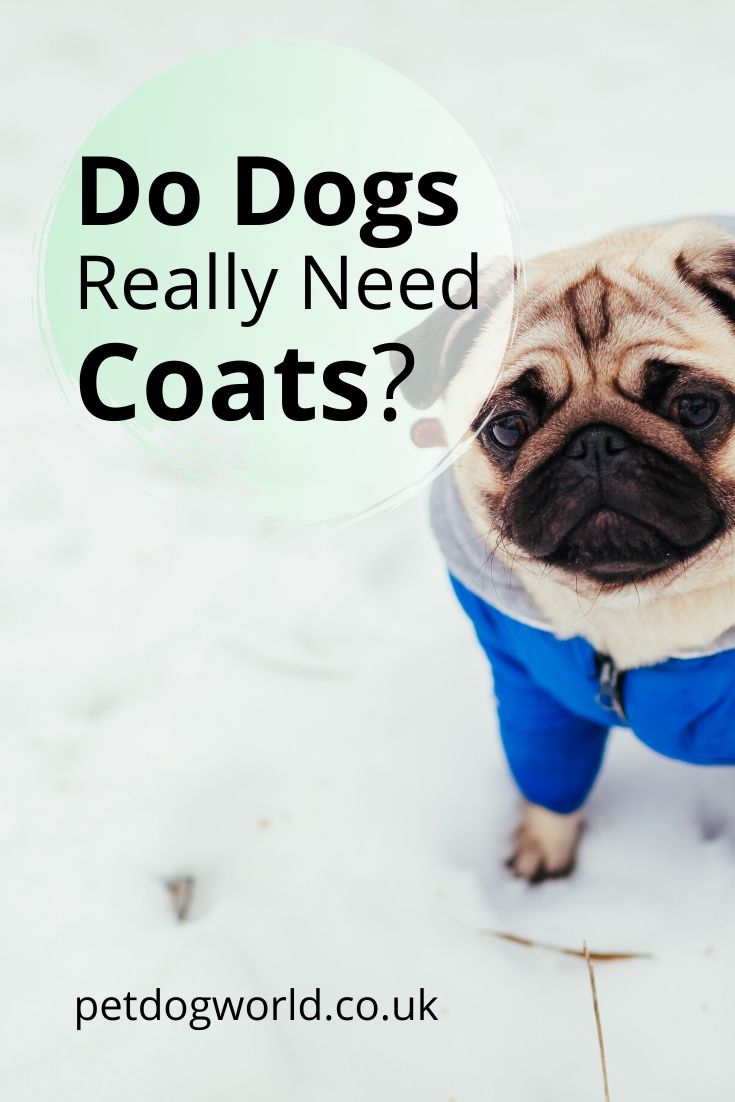Studies by experts indicate that, with a few exceptions, dogs do not really need to wear any clothing as they have a natural protective layer.
Dogs coats are designed to insulate them from the outside temperature, repel rainwater, filter out sunlight and prevent direct contact with certain agents that can damage them.

Dog coats can sometimes be very harmful to them because coats do not allow them to naturally regulate their body temperature. If they reach a very high temperature because of the coat, they could overheat and suffer from skin infections. Rubbing of the coat against the skin could cause injury or sores.
Which Dogs Don’t Need Coats?
The breeds of dogs that really don’t need coats are those that have a skin mantle that is characterized by climatic changes such as German shepherds, mastiffs, Akitas, Alaskan malamute, huskies, among others.
They are breeds that enjoy a hairy disposition similar to that of their ancestors who are the wolves. If you observe these dogs in detail you will be able to appreciate thick and long hairs, and under that cover, millions of hairs that are intertwined forming a layer close to the skin.
Due to this, the heat cannot escape from the body of these dogs, it is retained due to the first layer of fine hair, having as a second measure to keep the heat in a better way, the layer of thick hair, working as a thermal layer.
Which Dogs Do Need Coats?
On the other hand, there are exceptions, that is, there are breeds of dogs that do need coats, which are short-haired dogs. Unlike the breeds of dogs already mentioned, they have only one arrangement of hair, which is short and uniform, causing heat to escape from their bodies easily.
These breeds are bulldogs, chihuahuas, pinschers, boxers, greyhounds, dalmatians, among others.
In the harshness of winter, these dog breeds can feel cold, they can be uncomfortable and shaky. They will sometimes show signs of respiratory diseases as well as chronic organic stress.
These dogs would not endure the extreme winter weather by spending long periods in low temperatures and being exposed, therefore will benefit from a warm dog coat.
Long, silky-haired dogs such as Shi Tzu, Maltese, Lhasa Apso etc. The coat of these dogs is not effective either; as soon as it rains they get soaked with water like sponges, besides, they tremble quite often, which indicates nervousness, and stress, but also means that they feel cold.
Coats can be worn on rainy and cold days, it is a completely effective measure to prevent them from getting cold, as these dogs lose a considerable amount of heat through their body surface and are exposed not only by the skin layer but also by the small body mass they possess.
Age and disease
Other dogs that do need shelter are those that are weakened either by age or disease. Older or geriatric dogs are predisposed to cold because their low metabolism is now lower than it was previously. Also, because of their advanced age, they normally suffer from pain in the axial and appendicular skeleton.
Their arthritic joints require heat for better functioning and less pain. Hypothyroid dogs, follicular dysplasia and Cushing’s show patterns of alopecia in extreme cases.
Hypothyroidism, a hormone disorder that weakens hair follicles, is very common; the animal affected by this disease may show completely alopecic body extensions. In this type of case, the dog needs, besides the coat, a quick diagnosis and also an effective clinical treatment.
What types of dog coats are there?
Returning to dog coats, it is important to take into account the composition of the fabric, because a poor quality fabric, or very cheap garments, can affect their mobility, damage your dog’s skin and even cause allergies if your dog is very sensitive.
Raincoats: Being waterproof, they are the most recommended when going out, because, they have protection against rain, humidity and snow, making them perfect to avoid any kind of humidity
Hooded: These coats have a small hood, which is more of a compliment, but if it rains you can put it on to protect his little head and prevent him from getting wet.
Padded and lined: Especially suitable for dogs that are more sensitive to cold and have less hair. This type of coat can give your dog a lot of warmth.
If it is not cold:
Dog jackets: These coats are mostly reversible with different designs making you have two coats in one
Reflective: These dog coats have reflective strips or prints, which make them ideal for keeping our pets as controlled as possible when there is not much light outside.
Vests: Most commonly, dog coats are shaped like vests. If they are whole, they will have a part for your dog’s paws, but with the vest design, it is enough to keep them protected from the cold.
When and how to use dog coats?
The body temperature of dogs is usually 38º. This means that they suffer more in the summer from heat than from cold in the winter. Bearing this in mind, it is not advisable to use dog summer coats, as they can be very hot or sweaty.


